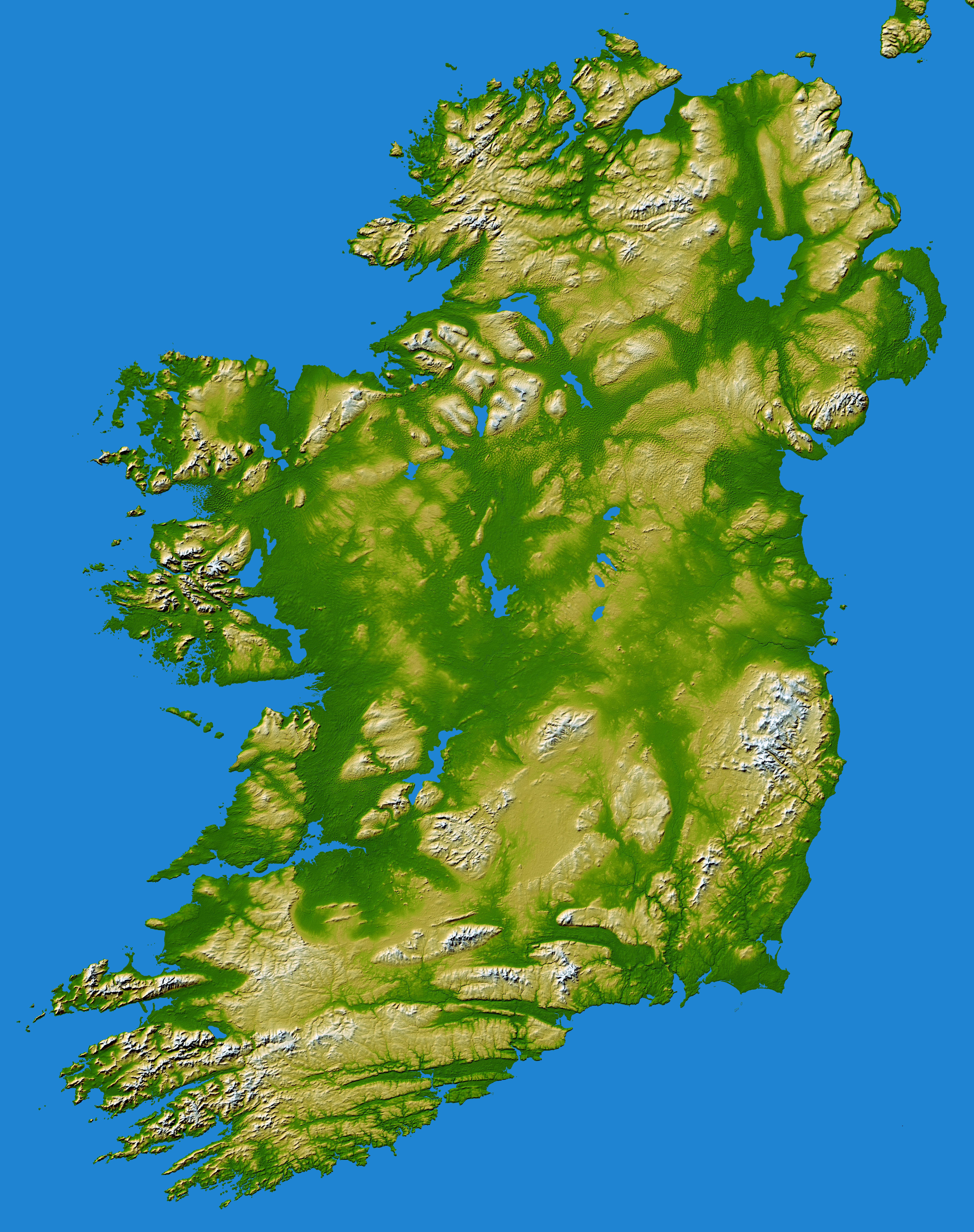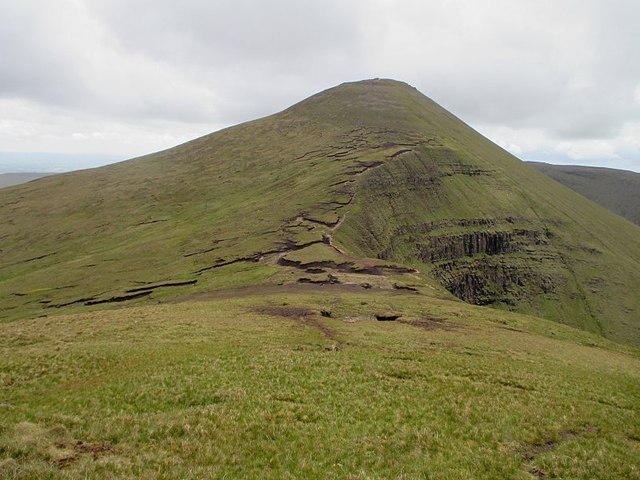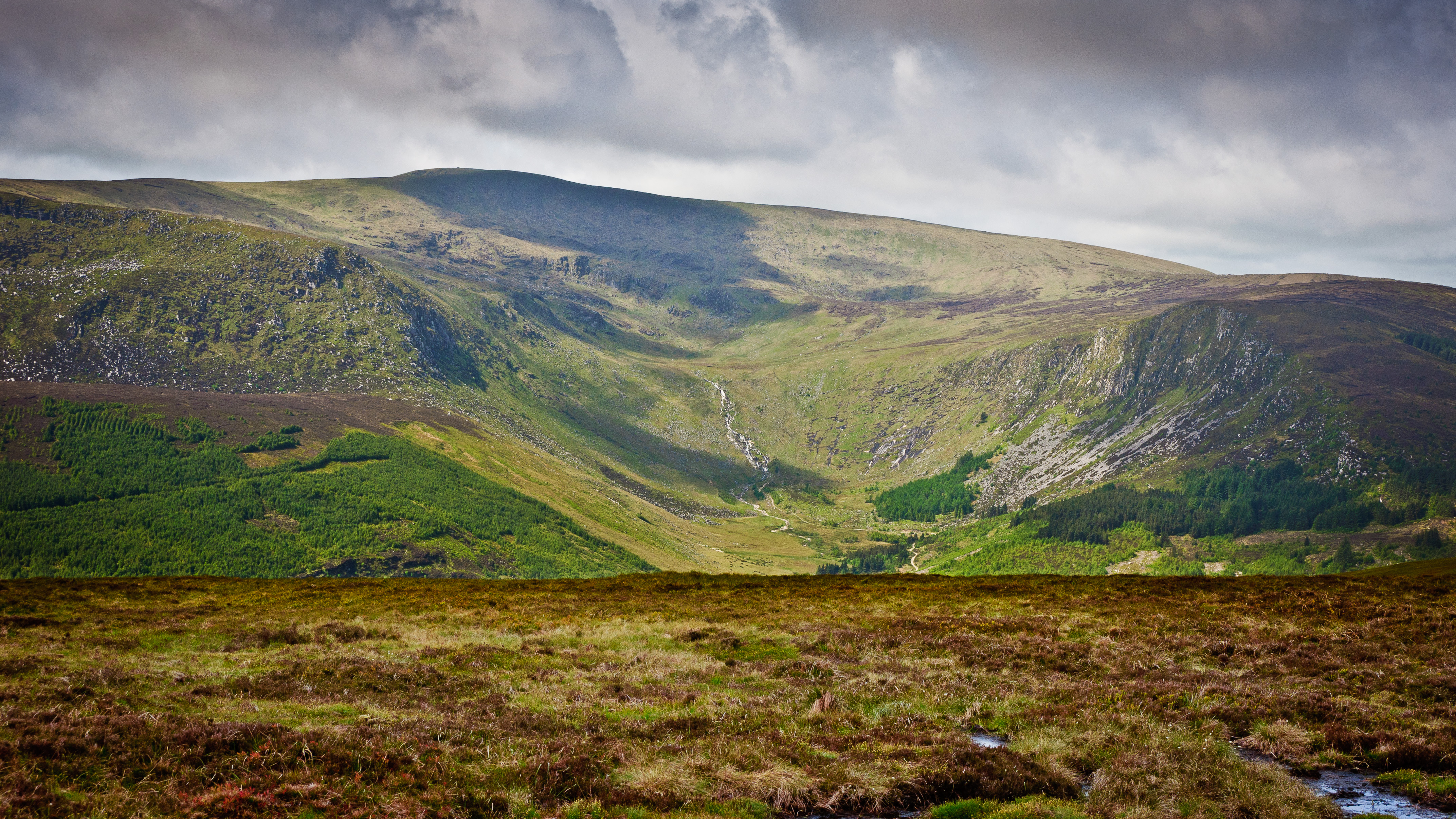|
List Of Irish Counties By Highest Point
This is a list of Irish counties by their highest point. These are most commonly known as county high points but are also sometimes referred to as county tops and county peaks. There are 32 counties in Ireland but in the case of 10 counties, marked with (‡), the highest point is shared between two counties, so there are only 27 distinct Irish county high points. This list is generated from the Irish '' MountainViews Online Database'' (October 2018 edition). The overall ranking of an Irish County High Point against all other peaks in Ireland is based on the Vandeleur-Lynam definition where a peak must have a minimum topographic prominence of to be on the list of peaks in Ireland. The four Irish provincial tops, also referred to as province high points, are also listed. The listings of Irish county high points under the definitions of Irish mountains (e.g. Furths, Marilyn, Arderins), are also provided. The list of Irish county and provincial high points contains four of ... [...More Info...] [...Related Items...] OR: [Wikipedia] [Google] [Baidu] |
MountainViews Online Database
In these lists of mountains in Ireland, those within Northern Ireland, or on the Republic of Ireland – United Kingdom border, are marked with an asterisk, while the rest are within the Republic of Ireland. Where mountains are ranked by height, the definition of the topographical prominence used to classify the mountain (e.g. the change in elevation required between neighbouring mountains), is noted. In British definitions, a height of is required for a mountain, whereas in Ireland, a lower threshold of is sometimes advocated. The lowest minimum prominence threshold of any definition of an Irish mountain is (e.g. the Lists of mountains and hills in the British Isles#Vandeleur-Lynams, Vandeleur-Lynam), however most definitions, including the International Climbing and Mountaineering Federation (UIAA) criteria, do not consider prominences below as being mountains (e.g. must at least be an Lists of mountains and hills in the British Isles#Arderins, Arderin or a Lists of mounta ... [...More Info...] [...Related Items...] OR: [Wikipedia] [Google] [Baidu] |
Geographic Coordinate System
A geographic coordinate system (GCS) is a spherical coordinate system, spherical or geodetic coordinates, geodetic coordinate system for measuring and communicating position (geometry), positions directly on Earth as latitude and longitude. It is the simplest, oldest, and most widely used type of the various spatial reference systems that are in use, and forms the basis for most others. Although latitude and longitude form a coordinate tuple like a cartesian coordinate system, the geographic coordinate system is not cartesian because the measurements are angles and are not on a planar surface. A full GCS specification, such as those listed in the EPSG Geodetic Parameter Dataset, EPSG and ISO 19111 standards, also includes a choice of geodetic datum (including an Earth ellipsoid), as different datums will yield different latitude and longitude values for the same location. History The invention of a geographic coordinate system is generally credited to Eratosthenes of Cy ... [...More Info...] [...Related Items...] OR: [Wikipedia] [Google] [Baidu] |
County Down
County Down () is one of the six counties of Northern Ireland, one of the nine counties of Ulster and one of the traditional thirty-two counties of Ireland. It covers an area of and has a population of 552,261. It borders County Antrim to the north, the Irish Sea to the east, County Armagh to the west, and County Louth across Carlingford Lough to the southwest. In the east of the county is Strangford Lough and the Ards Peninsula. The largest settlement is Bangor, County Down, Bangor, a city on the northeast coast. Three other large towns and cities are on its border: Newry lies on the western border with County Armagh, while Lisburn and Belfast lie on the northern border with County Antrim. Down contains both the southernmost point of Northern Ireland (Cranfield Point) and the easternmost point of Ireland (Burr Point). It was one of two counties of Northern Ireland to have a Protestant majority at the time of the United Kingdom Census 2001, 2001 census. The other Protestant-m ... [...More Info...] [...Related Items...] OR: [Wikipedia] [Google] [Baidu] |
Mourne Mountains
The Mourne Mountains ( ; ), also called the Mournes or the Mountains of Mourne, are a predominantly granite mountain range in County Down in the south-east of Northern Ireland. They include the highest mountain in all of Ulster, Slieve Donard at . The Mournes are designated an Area of Outstanding Natural Beauty and it has been proposed to make the area Northern Ireland's first national park. The area is partly owned by the National Trust and sees over 50,000 visitors every year. The Mourne Wall crosses fifteen of the summits and was built to enclose the catchment basin of the Silent Valley and Ben Crom reservoirs. The wall, and the area inside it, are owned by Northern Ireland Water. Name The name ' Mourne' is derived from the name of a Gaelic clan or sept called the ''Múghdhorna''. The older name of this mountainous territory was ''Bairrche'', which is likely a collective noun derived from the Irish ''barr'', meaning 'top, peak'. This survives in the Irish name for the m ... [...More Info...] [...Related Items...] OR: [Wikipedia] [Google] [Baidu] |
Slieve Donard
Slieve Donard ( ; ) is the highest mountain in Northern Ireland, the highest in Ulster, and the seventh-highest in Ireland, with a height of . The highest of the Mourne Mountains, it is near the town of Newcastle on the eastern coast of County Down, overlooking the Irish Sea. It is also the highest mountain in the northern half of Ireland. The Mourne Wall – built in the early 20th century – runs up the western and southern slopes of the mountain, joining a small stone tower at the summit. Also on the summit are the remains of two ancient burial cairns, one of which is the remains of the highest known passage tomb in Ireland. In Irish mythology the mountain was associated with the mythical figures Boirche and Slángha. It was later associated with, and named after, Saint Donard, who was said to have made the summit his hermitage. Up until the 1830s, people would climb the mountain as part of a yearly pilgrimage, which may have originally been a Lughnasadh (harvest) ritual. ... [...More Info...] [...Related Items...] OR: [Wikipedia] [Google] [Baidu] |
County Tipperary
County Tipperary () is a Counties of Ireland, county in Republic of Ireland, Ireland. It is in the Provinces of Ireland, province of Munster and the Southern Region, Ireland, Southern Region. The county is named after the town of Tipperary (town), Tipperary, and was established in the early 13th century, shortly after the Norman invasion of Ireland. It is Ireland's largest inland county and shares a border with eight counties, more than any other. The population of the county was 167,895 at the 2022 census. The largest towns are Clonmel, Nenagh and Thurles. Tipperary County Council is the local government in the Republic of Ireland, local authority for the county. In 1838, County Tipperary was divided into two Riding (division), ridings, North Tipperary, North and South Tipperary, South. From 1899 until 2014, they had their own county councils. They were unified under the Local Government Reform Act 2014, which came into effect following the 2014 Irish local elections, 2014 loca ... [...More Info...] [...Related Items...] OR: [Wikipedia] [Google] [Baidu] |
County Limerick
County Limerick () is a western Counties of Ireland, county in Republic of Ireland, Ireland. It is in the Provinces of Ireland, province of Munster and is located in the Mid-West Region, Ireland, Mid-West which comprises part of the Southern Region, Ireland, Southern Region. It is named after the city of Limerick. Limerick City and County Council is the Local government in the Republic of Ireland, local council for the county. The county's population at the 2022 census was 209,536 of whom 102,287 lived in Limerick City, the county capital. Geography Limerick borders four other counties: County Kerry, Kerry to the west, County Clare, Clare to the north, County Tipperary, Tipperary to the east, and County Cork, Cork to the south. It is the fifth-largest of Munster's six counties in size and the second-largest by population. The River Shannon flows through the city of Limerick, then continues as the Shannon Estuary until it meets the Atlantic Ocean past the far western end of the c ... [...More Info...] [...Related Items...] OR: [Wikipedia] [Google] [Baidu] |
Galty Mountains
Galtymore or Galteemore () is a mountain in the province of Munster, Ireland. At , it is one of Ireland's highest mountains, being the 12th-highest on the Arderin list, and 14th-highest on the Vandeleur-Lynam list. Galtymore has the 4th-highest topographic prominence of any peak in Ireland, which classifies Galtymore as a P600, or "major mountain". It is one of the 13 Irish Munros. The Galtee mountains are formed from sandstone and shale and contain 24 peaks above . It runs east-west for between counties Tipperary and Limerick; Galtymore is the highest point of both counties. The mountain is accessed by hillwalkers via the 3–4 hour ''Black Road Route'', but is also summited as part of the longer 5–6 hour ''Circuit of Glencushnabinnia'', and the at least 10–hour east-to-west crossing of the entire range, called the ''Galtee Crossing'', which is climbed annually in the ''Galtee Challenge''. The mountain and its deep corrie lakes are associated with various Irish ... [...More Info...] [...Related Items...] OR: [Wikipedia] [Google] [Baidu] |
County Wicklow
County Wicklow ( ; ) is a Counties of Ireland, county in Republic of Ireland, Ireland. The last of the traditional 32 counties, having been formed as late as 1606 in Ireland, 1606, it is part of the Eastern and Midland Region and the Provinces of Ireland, province of Leinster. It is bordered by the Irish Sea to the east and the counties of County Wexford, Wexford to the south, County Carlow, Carlow to the southwest, County Kildare, Kildare to the west, and South Dublin and Dún Laoghaire–Rathdown to the north. Wicklow is named after its county town of Wicklow, which derives from the name (Old Norse for "Vikings' Meadow"). Wicklow County Council is the Local government in the Republic of Ireland, local authority for the county, which had a population of 155,258 at the 2022 census of Ireland, 2022 census. Colloquially known as the "Garden of Ireland" for its scenerywhich includes extensive woodlands, nature trails, beaches, and ancient ruins while allowing for a multitude of w ... [...More Info...] [...Related Items...] OR: [Wikipedia] [Google] [Baidu] |
Wicklow Mountains
The Wicklow Mountains (, archaic: '' Cualu'') form the largest continuous upland area in Ireland. They occupy the whole centre of County Wicklow and stretch outside its borders into the counties of Dublin, Wexford and Carlow. Where the mountains extend into County Dublin, they are known locally as the Dublin Mountains (''Sléibhte Bhaile Átha Cliath''). The highest peak is Lugnaquilla at . The mountains are primarily composed of granite surrounded by an envelope of mica-schist and much older rocks such as quartzite. They were pushed up during the Caledonian orogeny at the start of the Devonian period and form part of the Leinster Chain, the largest continuous area of granite in Ireland and Britain. The mountains owe much of their present topography to the effects of the last ice age, which deepened the glens and created corrie and ribbon lakes. Copper and lead have been the main metals mined in the mountains and a brief gold rush occurred in the 18th century. Several major ... [...More Info...] [...Related Items...] OR: [Wikipedia] [Google] [Baidu] |
Lugnaquilla
LugnaquillaLugnaquilla . . () is the highest of the Wicklow Mountains in Ireland, rising to . It is also the highest Irish mountain outside of ,Mountainviews, (September 2013), "A Guide to Ireland's Mountain Summits: The Vandeleur-Lynams & the Arderins", Collins Books, Cork, and the [...More Info...] [...Related Items...] OR: [Wikipedia] [Google] [Baidu] |






